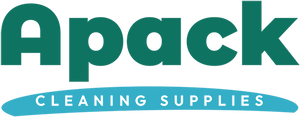Cleaning is one of those unavoidable tasks we must all undertake. And over time, many old wives tales and cleaning myths have done the rounds.
We have tackled some of the most well-known cleaning myths to distinguish what is fact or fiction, to inform, educate and bring awareness to all.
CLEANING FACTS
1) Kitchen sinks are dirtier than your toilet seat - True - But the scary fact is that it is not the only thing with higher contamination. Sponges, desks, phones and computer keyboards also hold more bacteria than your toilet seat.
2) Not everyone washes their hands after using the toilet - True - Approximately 20% of individuals do not always clean or sanitise their hands after visiting the bathroom. In 2016 the Australian commission of safety & quality in health care initiated a national hand hygiene audit to assess hand hygiene compliance within the medical field, ensuring compliance with infection prevention and control practices. The latest statistics state that medical compliance as of July-October 2021 is 87.2%.
Tip - With 1gram of faeces containing 1 million bacteria and 10 million viruses, it highlights the importance of sanitising stations, plus the implementation of personal workplace hand hygiene practices. Read more
3) Germs can live on surfaces for at least 3 days - True - Surface contamination is a real issue, and if not controlled with suitable cleaning, they can spread, become airborne and be a health risk.

Tip - Sanitise surfaces regularly using a disinfectant and clean wipes to prevent the spread of disease.
4) 98% of all office workers will be affected by some form of contagious disease - True - A workplace can be a breeding ground for Germs such as bacteria, fungi and viruses. Germs can become rampant in areas with poor workplace cleaning and sanitation practices, enabling employees to pick up viruses by breathing in airborne germs, touching contaminated objects and having inadequate personal hygiene.
Tip - This can be reduced drastically by enforcing better workplace cleaning procedures. Read more
CLEANING FICTION
1) Mould can only grow where it is wet - False - Although mould initially needs moisture to start growing, it can continue to grow on a surface area that is completely dry as it will absorb moisture out of the surrounding air. And long periods of unpleasant weather will increase moisture levels in the air.
Tip - Prevention is the best measure. Keep your home and workplace well ventilated, and let the air circulate to reduce moisture build-up. Open up windows and doors to allow fresh air flow.
2) Cleaning, sanitising & disinfecting are the same thing - False - It is a misconception that these are one and the same, as there is a clear difference. There are specific products for all three cleaning methods, and depending on your requirements will determine which is suitable.
Tip - Evaluate the surface you are cleaning to ascertain which cleaning system will be the best option to use.
3) Bleach cleans everything - False - Bleach is an oxidising agent that is an option for stain removal and killing germs on surfaces.
It is known to give you a quick visual fix, as it bleaches away stubborn stains, but it does not remove the underlying issue, as it is not a cleaner like detergent but a disinfectant, so it will not remove dirt and debris from surfaces on its own.
Example:- Mould removal, bleach will remove the colour from the mould, but it is not out of sight out of mind, use bleach as well as another product such as mould no more or cleaning vinegar that will kill the actual spores. (when using vinegar spray and leave for at least 60 minutes).
Tip - Recommend caution when using this corrosive, highly alkaline product as it can damage surfaces, always follow the correct dilution procedures.
Improve your ventilation while cleaning by using extraction fans and opening windows and doors as it has strong fumes.
Wear gloves and other appropriate protective wear as skin contact can be harmful (this will vary depending on the cleaning undertaken because you may require eye protection and masks for intense jobs).
Most importantly, never spray bleach or mix it with other household products as it can react to form very hazardous substances.
4) Commercial cleaning is expensive - False - Hiring a professional service can prove affordable and efficient, as they have the knowledge and products necessary to tackle any workspace effectively.
Tip - Remove the responsibility of workplace cleaning away from your employees by investing in a commercial cleaning service.
Allowing for more productivity as they can focus solely on their primary role. And reduce absentee days as the services offer the highest cleaning standards within your workplace.

Visit our website to find out more about our Commercial Cleaning Service available.
Learn more from our resources:- National Hand Hygiene Audit Data-Australian Commission of safety & quality in healthcare National library of medicine-How long do pathogens stay on surfaces Better Health-Mould Removal at home Better Health-Workplace safety infection control









